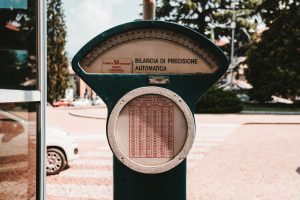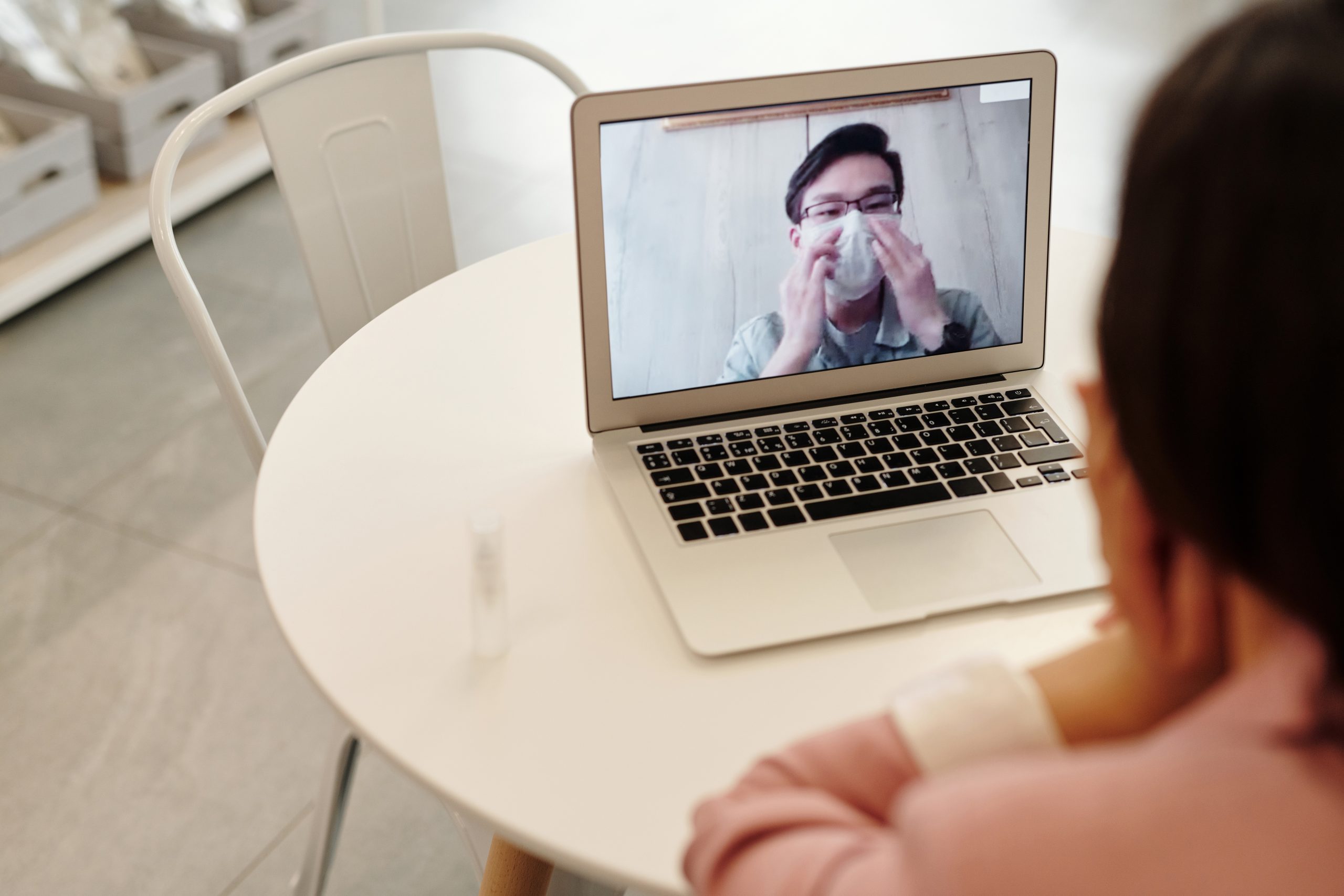How To Lose Weight Properly In Midlife Without A Crash Diet
07.07.2021
Audio version
For your convenience here is the audio version of this article. Press Play to listen.

“Slow and steady wins the waist”
Team Vippi
There has always been a fad diet or weight loss supplement that claims to have the answer to effort-free weight loss. While some short-term, extreme diet changes can help you lose weight, they’re rarely the solution they claim to be.
You have to draw the line between losing healthy weight and embarking on a vanity project. It’s easy to fool yourself that dropping a few pounds will chisel new abs into what used to be your pot belly. The reality isn’t as simple – but it is freeing.
Many people try the keto diet, for example, and that might be fine for them, especially if it’s helped them shed a few pounds and feel better about themselves. But crash diets like extreme carb cutting just aren’t sustainable long-term. And you might go looking for a quick fix only to wind up hating both the process and yourself so much that you yo-yo back to where you started the moment it’s over.
That’s several months with no ice cream. Why would you do that to yourself?
You can look attractive and feel great without being disturbingly skinny or ridiculously ripped. Yes, Henry Cavill developed astonishing abs and arms for his recent performance as Superman – but he suffered for 10 months to look good for 2 minutes of shirtless screen time. It’s not realistic
Robert Downey Jr., Cindy Crawford, and Naomi Watts are more achievable role models. They’re clearly healthy, but not artificially so. They inhabit their bodies and age with grace. They stay in shape, but that shape is not “The Terminator T-800 with no skin.”
The immediate comments of “Wow! You look so slim!” will feel great for a little while. But losing too much weight too quickly can leave you with loose skin around the neck, arms, and waist – jowls and bingo wings. And it’s going to be a nigh-on impossible mission to lose those love handles. Healthy isn’t always what looks “sexy” by Hollywood standards. It’s what feels and functions best in your body.
The best way to approach weight loss is to do what’s best for you, not the people looking at you – they’re not the ones who have to live with and look after your body. Keep tabs on what’s in your pantry, avoid junk and processed crap, and allow yourself a cheat day once in a while.
There’s no cheat code for healthy living. It’s called “living” for a reason – you have to inhabit it every day.
Foods that support weight loss
Swapping out the unhealthy foods in your pantry is going to be the first major step of your slow, steady weight-loss lifestyle.
It’s best to eat foods that fill you up and reduce your urge to snack.
These are the best foods to support weight loss – we’ve also linked a bunch of healthy recipes for each that you can start whipping up nutritious, filling treats today.
Proteins
- Eggs. They’ve got a lot of protein and healthy fats, so they fill you right up, as well as being packed with nutrients.
- Lean meat. This is a source of mucho protein, which helps you cut food cravings and build muscle when you exercise.
- Salmon. This will help your healthy eating plan swim upstream. Not only an abundant source of protein and healthy fats, they’re also a great source of omega-3 fatty acids, which reduce inflammation – a bodily reaction that may have a part to play in obesity.
- Tuna. Tuna is a low-fat, low-calorie protein powerhouse.
- Beans and legumes. This a fantastic source of fiber and protein, both of which are known for filling you up between meals.
Fruit and veg
- Cruciferous veg. This family of veg contains broccoli, Brussels sprouts, and cabbage. They’re a great veggie source of protein and fiber.
- Leafy greens. Low-calorie and low-carb, leafy greens like kale and spinach should form an essential part of your weight loss diet.
- Boiled potatoes. They’ve got a super diverse nutritional profile, providing a little bit of everything. They’re a great source of potassium, and they fill you up. Don’t believe the hype! Potatoes can be good for you.
- Avocados. Technically a fruit, avocados reduce snacking urges by providing a heap of healthy fats. They also have high water and fiber content, making them less of a carb nightmare than you would think.
- Grapefruit. Fruits are good for you, sure, but grapefruit is among the very best for weight loss.
Low-fat dairy
- Probiotic, full-fat yogurt. If your yog is probiotic, it has “friendly” bacteria that support your gut health. This can provide some protection against obesity-triggering inflammation and some hormonal changes that can contribute to obesity. Seems weird to choose full-fat yogurt, right? Wrong. Low-fat yogurt is often a sugar bomb waiting to explode.
- Cottage cheese. Cottage cheese is a fantastic source of dairy protein and calcium, which may help you with fat burning.
Seeds and nuts
Snacking isn’t unhealthy in itself – it’s simply what you choose to snack on that makes a difference. Seeds and nuts are high in fat, protein, and fiber, making them the perfect snack. (Choose fresh, unsalted ones though. Bar snacks don’t count! Sorry.)
Soups
Soups are essentially a lower-calorie way to eat the foods you like. Worried about a particular meal’s calorie intake? Soupify it! It’s not a miracle cure for unhealthy foods (they haven’t invented Oreo soup yet), but it can add water content to your food and reduce its calorie count.
Whole grains
Whole grains like oats and quinoa stack up your fiber and protein intake.
Healthy oils
Swapping out vegetable oil for coconut oil or extra virgin olive in your fry-ups adds healthy fats and fills you up more.
How to lose weight without strict diets
Crash diets can be intense and unnecessary. Moderation and balance are key to healthy, sustained weight loss.
1. Get active
To lose weight, you have to reach a calorie deficit. This means you burn more calories than you take in. The daily recommendation for Gen X-ers would be::
- 2,200 calories a day for people with a sedentary lifestyle (i.e. they barely move all day) between 41 and 60 years of age
- 2,600 calories a day for moderately active people from 41-45 years, and 2,400 calories a day from 46-60 years
- 2,800 calories a day for very active people from 41-56 years, decreasing to 2,600 calories a day as you approach 60 years
To lose 1 lb, you need to create a deficit of 3,500 calories over the course of a week. The most balanced way to approach this is by burning around 300 calories a day through exercise (such as 30 minutes of moderate intensity cycling or running a day) and cutting your daily calorie intake by 200 calories.
You can lose weight by basically eating one less bag of Cheetos a day (which clocks in at 144 g) and exercising little but often. That’s not so bad, is it?
2. Use a fitness tracker: This can help you work out how many calories you’re burning during exercise.
Google Fit, for example, will estimate how many calories you’ve burned while it tracks a run or cycle, and you can upload your weight changes over time. Plus, you don’t even need a smartwatch – you can do it all through your phone.
Apple offers an equivalent app, Fitness+, but it’ll cost you a monthly subscription. That said, Fitness+ offers you access to trainer-led workout vids.
(FitBit devices are also pretty nifty, with the ability to track your heart rate and sleep schedule. But if you’re just starting out, you’ll be fine with Google Fit.)
Some of these devices, like FitBit, also provide a food journal to help you track your caloric intake. Other apps, like MyFitnessPal, let you log your food intake and share data with these to help you store your info in one place and provide a holistic overview of your weight loss efforts.
Alternatively, have a look at Harvard Medical School’s list of the calories burned by different activities and make a guesstimate that way
This will help you work out whether you’ve burned more calories than you’ve eaten
3. Think in terms of lifestyle, not diet
Trying to pin all your hopes on specific foods (that may make you miserable anyway) won’t be sustainable in the long run. The same applies to insane bouts of exercise. They might make a good short-term impact on your body weight. But if a crash diet makes you crash back into your old ways after you hit a speedbump, it’s been pointless.
Instead, make healthy adjustments to the way you live that can make weight loss a side effect of daily life, not the sole focus of everything you do.
Try the following:
- Put down the car keys and cycle to your job or appointment instead.
- Go on walks or runs with your friends instead of staying at home and watching a movie. They’ll thank you, too.
- Find wholesome, filling meals that reduce cravings but still taste good. You don’t have to eat like a rabbit – for example, switch out vegetable oil for coconut or olive oil, rice for whole grains, milk chocolate for dark chocolate, and reduce portion size.
- Cook for your whole family. If they’re all involved in your nutritious lifestyle, you’ll be there to hold each other accountable. And why wouldn’t you look after your family’s health at the same time as your own?
- Treat yourself when you hit milestones. Reward your efforts instead of punishing your lapses, and your lifestyle will be much easier to keep up.

…..only Midlifers will remember this old school weighing machine !!
– Team Vippi
The health benefits of weight loss
According to the Centers for Disease Control and Prevention, here’s how shifting the pounds can help you preserve your health:
- Better blood pressure
- Lower blood cholesterol
- Lower blood sugar
- Better mood
- Lower risk of chronic disease
- Higher self-esteem
- More mobility
It’s about way more than the way you look. Although, sure, add being a sexy devil to this list, too.
4. Avoid punishing yourself.
You’re a human f*cking being. You’re going to have days where you lose willpower, and also those on which you treat yourself (and deservedly so – if we at Team Vippi see you not eating cake on your birthday, we’re going to get very upset indeed).
Don’t beat yourself up, roll with the punches, and try to make healthier decisions starting today.
5. Learn to cook from scratch
Cooking for yourself can take processed foods – those usually loaded with salt, flavoring, and hidden ingredients – out of the equation. If you can see and control everything going into your meals, you stand a much better chance of controlling your weight.
Here’s a guide on how to get started in the kitchen from none other than Gordon Ramsey – don’t say we don’t spoil you.
6. Try the Mediterranean diet
Before you see the word “diet” and run screaming, this isn’t a crash diet – it’s a lifestyle. If anything, it’s a “float along on a gondola” diet. The Mediterranean diet places a heavy emphasis on fruit, veg, and whole grains, but also allows you to sneak in dairy, fish, and a little meat while encouraging you to eat less of all three.
Any diet that literally recommends a glass of wine with a meal is probably one that you can rely on for its laid back approach.
It’s not a diet for rapid weight loss, but it can keep you eating the right kinds of foods despite having a high fat content. And Mediterranean food is absolutely delicious.
7. Keep your reason for weight loss at the forefront of your mind
Maybe your driving motivation for weight loss isn’t as severe as an impending heart attack. Perhaps your back keeps hurting (as being overweight can be a cause of conditions like sciatica and prolapsed disc pain in the back) and you want to defeat one of your children at backyard football or in the squash court.
Make your reason for a healthy weight loss lifestyle meaningful, tangible, and achievable.
What if my obesity is a serious health hazard and I need to lose weight quickly?
If your doctor has highlighted that you have morbid obesity and need to lose weight as an urgent health intervention, there are steps you can take:
- Diet changes: Your doctor may refer you to a dietitian who can help you with a customized diet plan that cuts calories in a sustainable way. They can help you lose 1–2 lbs per week. (You see? Even in extreme cases, slow weight loss is safer.)
- Gradually add physical activity: Once you’ve lost 10% of your weight loss goal, start to introduce exercise. Seeing a personal trainer can help you – having someone else hold you accountable is a powerful tool.
- Medication: Your doctor may prescribe medication to support weight loss due to extreme obesity. Watch out for side effects (and pharmacy bills).
- Surgery: This comes with a huge risk. If other options aren’t helping you reduce your weight (and you’ve given them an earnest try), bariatric surgery may help. During bariatric surgery, the surgeon removes or restricts part of the stomach so that you get full much quicker. Only get the procedure if you’re healthy enough to avoid serious complications like blood clots. It’s also not the final step – you still need to manage your weight and nutritional intake afterward.
- Therapy: People forget about the mental strains of obesity. If your physical condition has contributed to insecurity or a loss of hope, you might want to consider talk therapy. This can help you tackle the root of your relationship with food and help you implement healthy choices long-term.
The roundup
Not so bad, is it? No need for keto headaches and prolonged deprivation. Just moderation, a bit of food planning, and dedication – plus some delicious meals to top it off.
Once you hit your stride with a sustainable, healthy lifestyle, you’ll not want to let it go. You don’t need to look like a mid-eighties Hasselhoff or a Farrah Fawcett. Just do the best for yourself that you can do.

We know you can do it.
Team Vippi is in your corner ..
… waving pom-poms.
Article resources
Asher, A. (2020). How obesity can cause a herniated disc and back pain. https://www.verywellhealth.com/will-my-obesity-cause-a-herniated-disk-296741
Calories burned in 30 minutes for people of three different weights. (n.d.). https://www.health.harvard.edu/diet-and-weight-loss/calories-burned-in-30-minutes-of-leisure-and-routine-activities
Calories in Cheetos cheese big bag 85g. (n.d.). https://www.nutracheck.co.uk/CaloriesIn/Product/60/Cheetos+Cheese+Big+Bag+85g
Do you know how many calories you need? (n.d.). https://www.fda.gov/media/112972/download
Extreme obesity, and what you can do. (2014). https://www.heart.org/en/healthy-living/healthy-eating/losing-weight/extreme-obesity-and-what-you-can-do
Losing weight. (2020). https://www.cdc.gov/healthyweight/losing_weight/index.html
Losing weight. (n.d.). https://www.heart.org/en/healthy-living/healthy-eating/losing-weight
Jhaveri, A. (2020). Start with these 22 recipes if you’re doing the Mediterranean diet. https://greatist.com/eat/mediterranean-diet-recipes-for-beginners
Johnson, J. (2019). Our guide to the Mediterranean diet. https://www.medicalnewstoday.com/articles/324221
Kelly, D. (n.d.). Can I lose weight without dieting. https://www.webmd.com/diet/features/can-i-lose-weight-without-dieting#1
Shiri, R., et al. (2014). Obesity as a risk factor for sciatica: a meta-analysis. https://pubmed.ncbi.nlm.nih.gov/24569641/
The 20 most weight-loss-friendly foods on the planet. (2018). https://www.healthline.com/nutrition/20-most-weight-loss-friendly-foods
Types of weight loss surgery. (2020). https://www.niddk.nih.gov/health-information/weight-management/bariatric-surgery/types




















